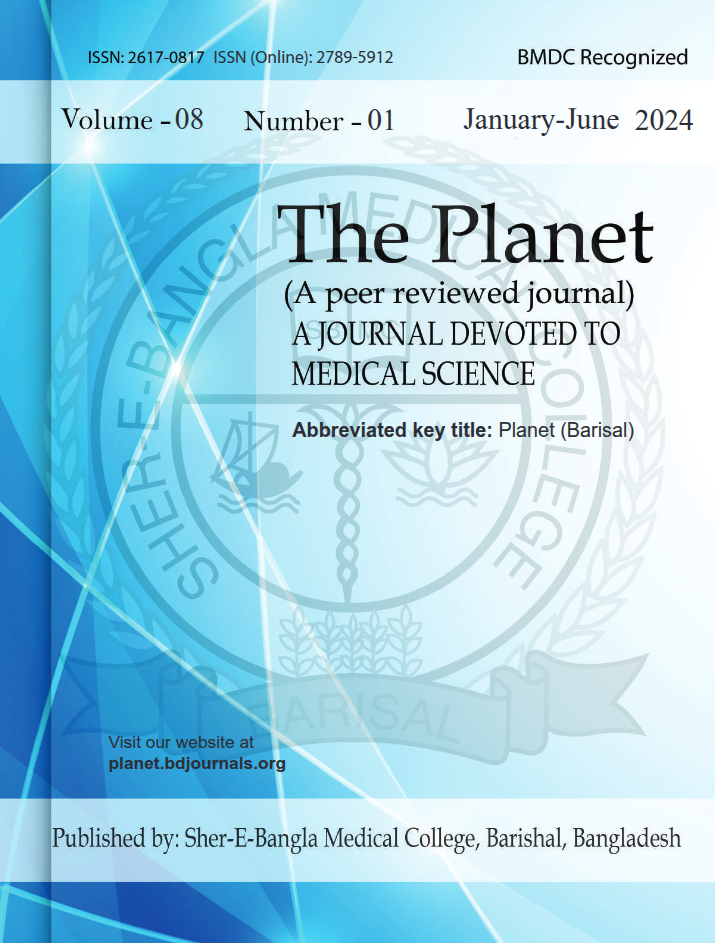Ultrasonographic Evaluation of Ectopic Pregnancy and Prediction of Outcome at Tertiary Level Hospital, Dhaka, Bangladesh
Published 28-12-2024
Keywords
- Ultrasonographic,
- Evaluation of Ectopic Pregnancy,
- Prediction,
- Bangladesh
Copyright (c) 2024 The Planet

This work is licensed under a Creative Commons Attribution 4.0 International License.
How to Cite
Abstract
Introduction: The objective of the study was to ultrasonographic evaluation of ectopic pregnancy and prediction of outcome at tertiary level hospital. Methods & Materials: A hospital based cross sectional study carried out in the Department of obstetrics & gynecology, Bangabandhu Sheikh Mujib Medical University (BSMMU), Dhaka, from 16th March 2017 to 15" September 2017. Sample size was 50. Detailed demographic data were collected from the informant and structured case report form. History, clinical examination was done meticulously and probable diagnosis constructed according to investigation result. Result: A total of 50 cases of ectopic pregnancies were recruited in the study group. In this study, the maximum incidence was seen in the 2nd decade 58.0%, next to it was the 3rd to 4 decade 30.0 %. Mean age of the patient was 24.9 ± 9.7 years. USG findings of ectopic pregnancy revealed that, empty uterine cavity and Inhomogeneous adnexal mass was most common findings, seen in (100.0 %, 94.0%) of patients. It was followed by Hyperechoic tubal ring (80.0%), Products of conception located outside of the endometrial echo, surrounded by a continuous rim of myometrium in (4.0%) of patients. Site of ectopic pregnancy revealed that, 47(94%) in Isthmo-Ampullary region, 2(4.0%) interstitial region and only single patients detected in ovarian ectopic. Out of 50, only 3 patients left against medical treatment. Methotrexate (MTX) was the drug used for conservative medical treatment. Hemodynamically unstable patients had higher levels of ẞ- hCG or a mass more than 3.5cm, surgical management was preferred. Surgery was performed in 43 patients as the first line of management. In 4 patients with Medical therapy failure, surgery was performed as second line of treatment. In this study at follow-up, any adverse event, complications were assessed on a prescribed questionnaire and patient's haemodynamic status was examined for further outcome. Blood transfusion was required in 14 patients, haemoperitoneum detected in 6 patients and nine patients were developed shock. Study shows that 37 (74.0 %) of the patients recovered without sequel, 8 (16.0%) remains standstill and they discharged on request or risk bond. 5 cases (10.0%) developed wound infection. Conclusions: Ectopic pregnancy is a life-threatening condition, major social, personal and economical burden. The importance of this finding is even clear that Ultrasonography (USG) is a standard, cheep and valuable diagnostic tool for evaluation of ectopic pregnancy.



